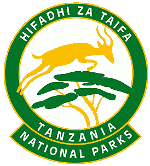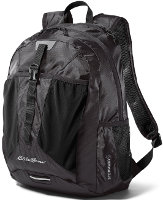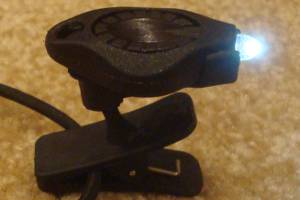
Mount Kilimanjaro

My Mount Kilimanjaro Trek
I climbed to the summit of Mt. Kilimanjaro on an 8-day trek up the Lemosho Route from February 7 to 15, 2019 with my wife and 20 other people from our church and friends. The entire hike was only about 42 miles, traveling only 5 or 6 miles each day at a snail's pace due to the elevation and tradition of Kili treks. It was a nice change to go slowly and be in no hurry to make big miles.
My Gear
This trek was a first for me. Climbing Kilimanjaro requires you to use a guide service, and that includes porters to carry your equipment, cooks to prepare your food, and guides to lead you. So, all I had to carry each day was a small daypack with essentials. So, it weighed maybe 4 pounds plus 6 pounds of water on summit day but usually 1 pound of water.
| Item | Oz | $$ | Notes |
| EB Stowaway pack | 12.7 | $0 |  This is a small, frameless 20L pack that can be compressed down into its own little packet when not used. We both had identical packs, Christmas gifts from my parents. They were very light and did a great job carrying our daily loads. This is a small, frameless 20L pack that can be compressed down into its own little packet when not used. We both had identical packs, Christmas gifts from my parents. They were very light and did a great job carrying our daily loads. |
| Sleeping | |||
| shelter bag pad | 0 | $0 | We rented tents, sleeping bags, and pads from the outfitter. They all had many trips of use, but were still in servicable shape and worked well for us. Neither of us were ever uncomfortable or cold at night. |
| Cooking | |||
| All the food was carried by porters and cooking done by staff in a kitchen tent and served to us in huge dining tent, on tables and we sat in folding chairs. There was a lot of fresh fruit, vegetables, meat, and grains. We were never hungry We did bring snacks from home to eat during the day while hiking, but I gave mine to the guides to share with the porters because there was so much food. | |||
| Water | |||
| water filter | 0 | $0 |  The support crew carried a heavy, fast Katadyn Expedition filter that kept up with the needs of our huge group. The porters sometimes had to carry 5-gallon pails of water from small creeks running down the mountain a mile or more from camp. We only had to carry enough water for each day hike. I drank a lot before hiking and never used all of the 1/2 liter I carried each day. The support crew carried a heavy, fast Katadyn Expedition filter that kept up with the needs of our huge group. The porters sometimes had to carry 5-gallon pails of water from small creeks running down the mountain a mile or more from camp. We only had to carry enough water for each day hike. I drank a lot before hiking and never used all of the 1/2 liter I carried each day. |
| water bottle | .6 | $0 | one .6L throw-out bottles - cheap, easy, light. Disposable plastic bottles are supposedly not allowed on Kili, but no one mentioned it to me. |
| water | 16 | 1/2 liter each day - 2.2lb/L | |
| Clothes | |||
| Lutherhaven baseball hat | 3.5 | $1 | with home-made sun cape to protect ears and neck. |
| Hawaiian shirt | 8 | $0 | light, synthetic, colorful - just to be different than my normal drab LNT colors. :-) |
| wicking t-shirt | 9 | $0 | under my Hawaiian on the cooler days |
| BSA zip-off pants | 17.2 | light and sturdy | |
| Darntough socks | 2.9 | I bought some on the A.T. They wore out, now I'm wearing the free replacement pair. Soft, strong, and comfortable. | |
| underwear | 1.2 | ||
| boots | 36 | $0 | I wore my Keen Pyrenees boots that I won through an LNT contest. They are great, but I just don't wear them much any more since I go with trail shoes. So, after the climb, I donated them to the porters since they are still in very good shape. |
| bandanna | 2.0 | $1 | 2 of them, too many uses to list here. Mostly used for sun on my neck. |
| down jacket | 16 | $70 | Wore it off and on as temps changed. |
| rain jacket | 18 | $62 | New REI jacket since my wife didn't want me just using my usually disposable poncho. Only wore it on the summit day as a windbreaker. |
| rain pants | 16 | $0 | Old pair. Carried them every day, just in case, but only wore them on the summit day for the wind. |
| Electronics | |||
| cellphone | 5.2 | for daily blogs and pics. LG Stylo 3. This is my watch, alarm, phone, camera, gps. | |
| tracker | 4.2 | pings to satellite with my location. Batteries last about three weeks when on for 12 hours/day. | |
| headlamp | .5 | $0 |  Awesome photon light. One set of batteries lasts about 10 days. Awesome photon light. One set of batteries lasts about 10 days. |
| batteries | 4.0 | $15 | Extra 3 AAA lithiums for tracker, and 4 CR2016 coin batteries for headlamp - purchased online for pennies. Didn't need any of them. |
| Other | |||
| trek poles | 16 | $10 | Leki poles rented from outfitter. Worked fine, nothing special. |
| rain poncho | 1.2 | $4 | cheap disposable to cover me and pack from rain, just in case |
| rain skirt | 1.5 | $1 | Just a garbage bag cut open and cinched around waist, just in case |
| 1st aid kit | 3 | basic personal items - bandaids, pain relief, tape, liquid skin, CPR mask, gauze pads, allergy meds, ... | |
| compass | 1.1 | ||
| knife | 1.1 | tiny, single blade. Used it every day to whittle my stick in camp. | |
| toothbrush | 1.3 | includes paste | |
| ear plugs | 0 | I'm taking a bunch, just in case. | |
| toilet kit | 2.8 | TP, Purell | |
| misc. | 5 | 2 garbage bags, whistle, clippers, thermometer, and other small items | |
| stickers | 2 | Taking some Hiking Dude stickers to hand out to folks I meet. | |
| Total | ~12 lbs total weight - ~6lbs worn, not in pack = ~6lb pack weight | ||
My Expenses
This is the cost for the two of us:
- airfare, kili trek, and tanzania tour - $12,500
- tips ofr guides & porters - $600
- travel insurance - $190
- souvenirs, gifts, spending, ... - $500
- medications, shots, misc. gear - $200
- Total - $14,000
Mount Kilimanjaro Statistics
| Location | Moshi, Tanzania, Africa |
| Distance | 42 miles - the Lemosho Route is longer than the others with more time to acclimate and better success rate. |
| Total Elevation | Lemosho Gate is at 6,890 feet and the summit is 19,341 feet, so the elevation gain is 12,451 feet, but there are a few signifanct Ups and Downs along the way. |
| Terminus | The Lemosho Route starts at Lemosho Gate in the west and follows the mountainside to the east, gradually gaining elevation to the final camp on the east side. From there, the summit is climbed and then the descent exits out the Mweka Gate on the southeast side of the mountain. |
| Terrain | As you gain elevation, you pass through 5 climate zones on Mount Kilimanjaro. You drive through the Cultivation Zone where pine trees, carrots, and potatoes are grown and manually harvested up to about 6000 feet. The Rainforest climbs up to around 9000 feet and we had one night sleeping in this zone. Right at 9000 feet, there is a sharp change to Heather and Moorland with the forest trees abruptly stopping. The Heather brush gives way to the Moorland grasses which rise to about 13,000 feet. Over 13,000 feet, you are above the clouds much of the time so it is a Highland Desert. Small plants grow up to around 16,000 feet, but above that it is too harsh and the Arctic Zone takes over from there to the summit. Up here, you have gravel and scree with permanent ice glaciers on the summit. |
| History | First summit ascent was in October, 1889. Thousands attempt to climb each year and about 45% are successful, but on the longer Lemosho route about 85% are successful. |
| Challenges | The elevation and possible bad weather are the two things that can defeat a climber. Altitude illness stops many people, especially those that try to climb too fast. Weather is just a matter of luck, but climbing at the right time of year makes a big difference. |
| Time Window | January and February, then August and September are the dry weather times and most popular for climbing. |
| Time to Hike | Typically takes 5 to 8 days. Longer treks tend to be more expensive but have a much higher success rate. |
| Permits | Climbers cost around $150/day to camp in the Kilimanjaro National Park, but your outfitter includes that in the trek cost. |
| Summit Tally | Thousands and thousands have stood on the top. The trails are packed down from hikers before you, and you can see them easily in satellite images on Google maps. |
Links
| Google Earth | View Trail with google |
| Our Outfitter | Tanzania Choice Safaris - they did an excellent job! |
Hike On: My Hikes
Find more Hiking Resources at www.HikingDude.com


Follow Me
Recent Comments